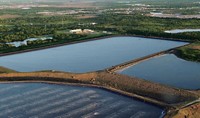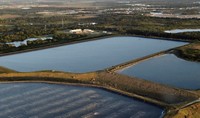Advertisement
Grab your lab coat. Let's get started
Welcome!
Welcome!
Create an account below to get 6 C&EN articles per month, receive newsletters and more - all free.
It seems this is your first time logging in online. Please enter the following information to continue.
As an ACS member you automatically get access to this site. All we need is few more details to create your reading experience.
Not you? Sign in with a different account.
Not you? Sign in with a different account.
ERROR 1
ERROR 1
ERROR 2
ERROR 2
ERROR 2
ERROR 2
ERROR 2
Password and Confirm password must match.
If you have an ACS member number, please enter it here so we can link this account to your membership. (optional)
ERROR 2
ACS values your privacy. By submitting your information, you are gaining access to C&EN and subscribing to our weekly newsletter. We use the information you provide to make your reading experience better, and we will never sell your data to third party members.
Environment
Katrina's Damaging Floodwaters Not as Toxic as Feared
by Bethany Halford
October 17, 2005
| A version of this story appeared in
Volume 83, Issue 42
Hurricane Aftermath
In the wake of Hurricane Katrina, when Lake Pontchartrain breached its levees and filled the low-lying city of New Orleans like a bathtub, public health officials feared floodwaters would expose residents and first responders to a brew of toxic chemicals and pathogenic organisms. A newly published analysis, however, indicates that those floodwaters were no more toxic than the city’s normal storm runoff (Environ. Sci. Technol., published online Oct. 11, dx.doi.org/10.1021/es0518631).
“What we had in New Orleans was basically a year’s worth of storm water flowing through the city in only a few days,” says John H. Pardue, director of the Louisiana Water Resources Research Institute at Louisiana State University, Baton Rouge. “We still don’t think the floodwaters were safe, but it could have been a lot worse. It was not the chemical catastrophe some had expected,” he adds.
In early September, Pardue and coworkers collected floodwater samples from the city’s West End and Lakeview neighborhoods—an area where rescue efforts led to widespread exposure to floodwaters—and from the Tulane-Gravier neighborhood.
Pardue’s team detected slightly-elevated levels of lead and gasoline, but these were similar to those found in normal storm runoff and did not pose a major threat to human health. They found that the greatest potential risk to human health came from very elevated levels of fecal bacteria, probably from the city’s overwhelmed sewer system.
Pardue notes that the water pumped back into Lake Pontchartrain may pose a threat to aquatic life because of its low oxygen concentration and the presence of heavy metals such as zinc and copper.





Join the conversation
Contact the reporter
Submit a Letter to the Editor for publication
Engage with us on Twitter